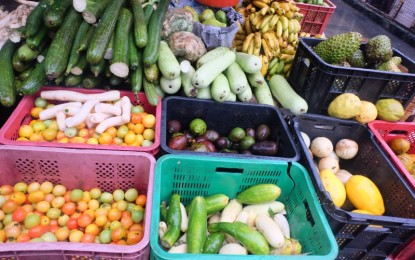Food
Is it essential to have a food garden?
MANILA — One of the highlights of President Rodrigo Duterte’s third State of the Nation Address was about access to universal health care. As ordinary citizens, how can we help ourselves maintain a healthy lifestyle so we could better avoid getting sick and be healthier?
The National Nutrition Council (NNC) suggests trying food gardening.
Every July, the country observes Nutrition Month, and the NNC, under Presidential Decree 491 or the Nutrition Act of the Philippines, was tasked to lead and coordinate this nationwide observance.
For this year, the NNC chose the theme, “Ugaliing Magtanim, Sapat na Nutrisyon Aanhin!”, which is about food gardening.
The theme aims to contribute to improved nutrition through improved food access by increasing the number of households, schools, and communities engaged in food gardening. The theme also aims to encourage communities to try this activity.
The NNC described food gardens as “multi-storey combinations of various trees and crops, sometimes in association with domestic animals, around homesteads, and that home garden cultivation is fully or partially committed to vegetables, fruits, and herbs, primarily for domestic consumption and secondarily for additional household income”.
In an interview with the Philippine News Agency (PNA), NNC Nutrition Information and Education division chief Jovita Raval explained why food gardens are important to have in every home and in other places.
Food gardens, she said, can be considered as a three-in-one intervention.
“First, it is a food security intervention, since harvest from the garden can provide additional food for the family, and if planned well, can provide daily food for a family of five or six members,” she said, adding that the savings from not buying additional food can be used to buy other requirements of the household.
Second, food gardens can serve as a nutrition intervention, since consumption of the produce would improve the quality of the diet of the family, she continued.
“The consumption of fruits and vegetables, as well as fresh foods from the garden, will improve the nutrient quality of diets and thus help prevent malnutrition,” Raval noted.
Third, food gardens can be considered as a health intervention, since it has many benefits. “Not only does it provide a means of physical activity, food gardening improves mood, reduces stress and anxiety, and reduces allergy and asthma. It also lowers cholesterol and blood pressure and obesity,” she pointed out.
Raval added that aside from these, food gardening could also lead to improved community relations, and the extra produce can also be sold to provide them with additional income.
Among the things that one needs to consider if he or she plans to have a food garden is that this should have a variety of vegetables, fruits, and small animals. The food that should be included should provide the needed calories and nutrients, Raval said.
“There are a number of gardening technologies that can be applied so that a family can harvest daily,” she added.
Furthermore, there are available technologies that can be used by those residing in urban areas or those with limited space.
“Container gardening, vertical gardening can be done when land or space is limited,” Raval emphasized.
Preparing healthy vegetable meals
Raval reiterated that food gardening provides an alternative source of fresh, safe, and inexpensive vegetables. What are her pointers and suggestions if one wants to prepare a vegetable meal?
1. Vegetables should comprise about 33 percent of each meal, based on the Pinggang Pinoy or healthy Filipino food plate.
2. Recommended vegetables are those green leafy and yellow vegetables that are packed with vitamins and minerals, as well as anti-oxidants and fiber for good health.
3. Plan the food garden so that harvest can be done each day. For starters, one can plant vegetables that are easy to grow, such as malunggay, sweet potato (camote). Plant indigenous vegetables such as alugbati, talinum, saluyot, himbabao, ampalaya. Plant papaya and banana as well.
4. Grow chickens, goats for source of meat, milk, and eggs. Eat at least 5 servings of fruits and vegetables every day. Each meal should have vegetables.
5. A family can also prepare one-dish meals, such as tinola, sinigang, in which a protein source is cooked together with vegetables. Make sure there are enough vegetables for the family. A serving is equivalent to 1/2 to 1 cup of vegetables.
6. Use vegetables to feed infants starting 6 months.
Meanwhile, Raval said one can check some healthy vegetable recipes posted in NNC’s Radyo Mo Sa Nutrisyon Facebook page.






















